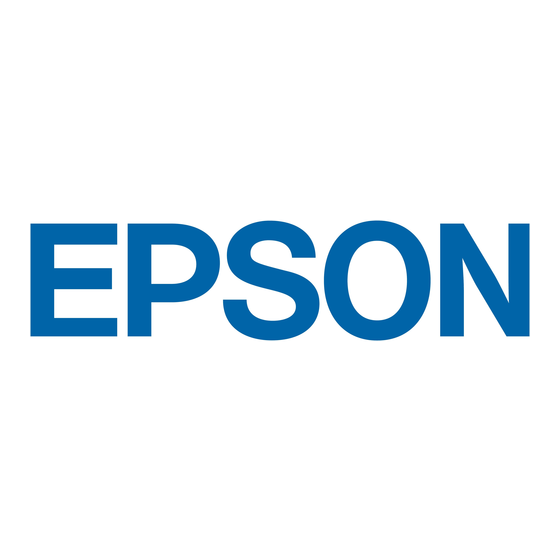EPSON PowerLite 7800p Projector
Connecting the Projector
You can connect the projector to three computer sources or
four video sources—up to a total of four sources altogether.
You can include an independent sound channel for each
source. (See the Quick Setup poster or the User's Guide for
complete setup instructions.)
Note: The preview feature lets you see all the sources at a glance,
so you can easily switch among them. See page 5.
Types of Connections
The following types of connections are possible, depending on
the kinds of signals your equipment generates and its available
output ports.
Computer equipment
Output signal
Required cable
VGA cable
Analog RGB video
BNC cable
VGA-to-BNC cable
DVI-D dual-link cable (DVI-to-DVI or
DVI
DFP-to-DVI available from EPSON)
Video equipment
Output signal
Required cable
Composite video
RCA video cable
S-Video
S-Video cable
Component video—
BNC cable
NTSC (YCbCr)
Component video—
BNC cable
HDTV (YPbPr)
VGA cable
RGB video
BNC cable
Note that the projector's Computer and BNC ports accept a
variety of input signals. If you're connecting to one of these
ports, you'll need to make sure that the correct input signal
setting is selected, or your image won't display properly.
To change the input signal setting, do the following:
1. After turning on the projector, press the
menu screen appears.
2. Select the
menu.
Setting
3. Change the
Computer Input
needed to match the signal generated by your computer or
video equipment. (See the User's Guide for more
information.)
You can also cycle through the settings by repeatedly pressing
the source button for your device on the remote control.
4
EPSON PowerLite 7800p Projector
-
button. The
Menu
or
setting as
BNC Input
Playing Sound Through the Projector
You can play sound through the projector's speaker system or
you can attach an external speaker system.
Two types of audio cables are included with the projector:
If your computer or video equipment is connected to the
or
Computer
DVI
If your equipment is connected to the
port, or to the
BNC
Using the Remote Control as a Wireless
Mouse
If you've connected a computer to the projector, you can use
the projector's remote control as a wireless mouse by
connecting the USB cable that came with the projector. The
wireless mouse function is supported on systems with a USB
port running Windows XP, 98, 2000, or Me; or Macintosh
OS 8.6 to OS X 10.2. See the User's Guide for more
information.
Viewing Images on an External
Monitor
You can use an external monitor to display images from any
connected computer source. This lets you view your
presentation close-up, as well as on the projection screen.
Note: Some LCD monitors may not be able to display the image
correctly. If you have trouble displaying the image, connect a
multiscan monitor. If you're projecting computer images, make
sure the computer's refresh rate is set to 65 Hz or greater.
To use an external monitor, connect it to the projector's
port, as shown:
Monitor Out
External monitor
5/03
port, use the stereo mini-jack cable.
or
Video
ports, use the RCA-style audio cable.
S-Video

